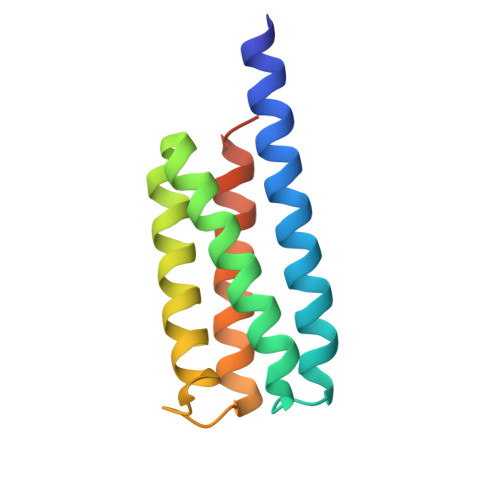Increasing sequence diversity with flexible backbone protein design: the complete redesign of a protein hydrophobic core.
Murphy, G.S., Mills, J.L., Miley, M.J., Machius, M., Szyperski, T., Kuhlman, B.(2012) Structure 20: 1086-1096
- PubMed: 22632833
- DOI: https://doi.org/10.1016/j.str.2012.03.026
- Primary Citation of Related Structures:
3U3B - PubMed Abstract:
Protein design tests our understanding of protein stability and structure. Successful design methods should allow the exploration of sequence space not found in nature. However, when redesigning naturally occurring protein structures, most fixed backbone design algorithms return amino acid sequences that share strong sequence identity with wild-type sequences, especially in the protein core. This behavior places a restriction on functional space that can be explored and is not consistent with observations from nature, where sequences of low identity have similar structures. Here, we allow backbone flexibility during design to mutate every position in the core (38 residues) of a four-helix bundle protein. Only small perturbations to the backbone, 1-2 Å, were needed to entirely mutate the core. The redesigned protein, DRNN, is exceptionally stable (melting point >140°C). An NMR and X-ray crystal structure show that the side chains and backbone were accurately modeled (all-atom RMSD = 1.3 Å).
Organizational Affiliation:
Department of Chemistry, University of North Carolina at Chapel Hill, Chapel Hill, NC 27599-3290, USA.














